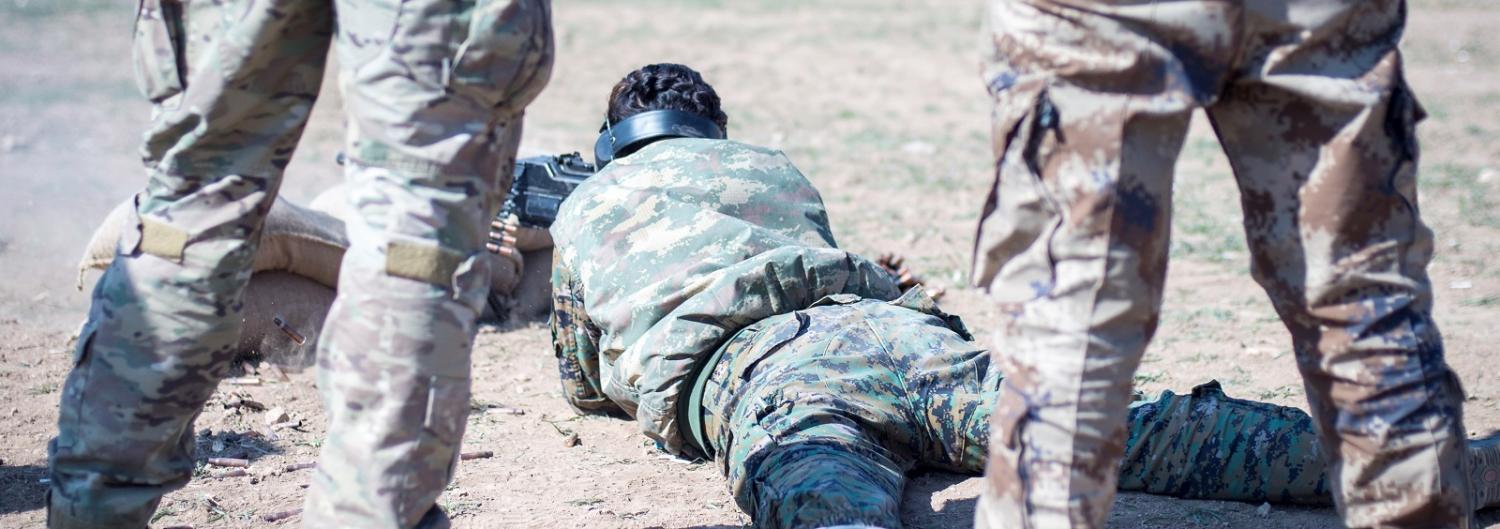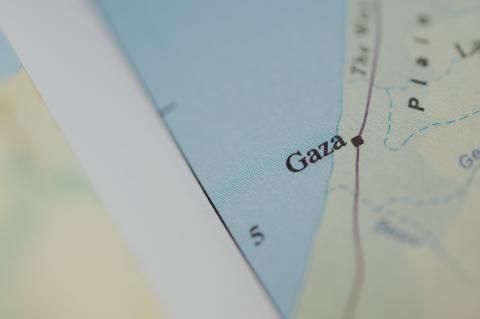The number of US boots on the ground in Syria is gradually increasing without, it would appear, a plan to inform the public about what broader purpose the troops' presence serves and, perhaps most importantly, what defines mission success and would allow the troops to redeploy.
Before leaving office, President Obama authorised around 500 Special Forces personnel to work inside Syria as support and enabling personnel for the majority-Kurdish Syrian Democratic Forces (SDF) fighting against Islamic State. Now, as the SDF closes in on Raqqa, the need for more conventional combat support capabilities not possessed by Special Forces increases. Consequently we have seen the recent deployment to Syria of part of a US Marine Corps M777 155mm battery. This deployment is likely to provide the all-weather, guaranteed fire support that close air support cannot, and the weight, range and accuracy of fire that mortars lack. But land forces come with overheads, so a ground security force and logistics tail (155mm ammunition is bulky and a lot may be required if supporting a ground assault on a significant population centre) are also required. The M777 is also towed (and air portable), so it’s likely that these forces will be operating from a fire support base rather than moving to support the flow of battle. The M777 is capable of firing GPS- and laser-guided munitions but it’s unknown what the holdings currently are. The US has access to at least one airbase in Kurdish-controlled NE Syria so force and logistics flows are manageable.
Elsewhere the US has deployed elements of the 75th Ranger Regiment in Stryker vehicles and Humvees in an emphatic show of force around the town of Manbij. This very public deployment has garnered a lot of attention but, for the moment, it is a distraction to the main event which remains the re-taking of Raqqa and eventual defeat of Islamic State. There is great potential for conflict in the increasingly crowded battle space in northern Syria. Islamic State has been squeezed from the north by Turkish and Turkish-supported forces, from the east by US-supported Kurds and from the southwest by Syrian and Syrian-allied forces. The result is a train smash of competing groups - supported by external states with often diverging interests - whose claimed territory abuts each other’s. The advance of Syrian and Kurdish forces has blocked the movement further south of Turkish and Turkish-supported forces, a move that neither the US nor Russia views as being in anyone's best interests. The presence of some Russian and US forces among the Kurdish and pro-Syrian regime forces is designed to dissuade Ankara from thinking that it can become too big a player in Syria.
Some clashes between forces have already occurred. A Russian air strike killed three Turkish soldiers last month and the Syrian government has accused Ankara of killing regime forces after firing artillery missions at their positions. With the Syrian government calling on Turkey to withdraw from Syrian territory, and the Turkish foreign minister warning Russia not to side with the YPG, the recent meeting in Antalya between senior military commanders from Russia, Turkey and the United States shows how seriously the deconfliction is being taken.
As complex as the situation around Manbij is, there are other, equally complex, questions facing the Trump Administration as it seeks to put flesh on the bones of its ‘defeat IS’ and ‘establish safe zones’ strategy. The CENTCOM commander’s rather cryptic statement to the Senate Armed Services Committee - ‘I think as we move towards the latter part of these operations into more of the stability and other aspects of the operations, we will see more conventional forces requirements’ - has certainly raised the option of additional forces in the future. The talk of stability options, however, hints at a much longer commitment in Syria than an intent to ‘defeat IS’ would require. Little has been said of the plan for safe zones in Syria, other than a claim from Trump that they would be paid for by the Gulf states.
Meanwhile Turkey continues to complain about Washington's selection of the Kurds as a strategic partner in Syria but there is little the Turks can do about this at the moment; they are boxed-in around Manbij and are hostage to decisions made by others. For their part, the Kurds are nothing if not pragmatic, and if you’re looking for a long-term partner then in Syria you can pretty well guarantee that Washington can’t and won’t fulfill that role. Turkey considers the YPG to be terrorists and there is no stomach internationally for Kurdish independence in Syria or elsewhere. While there is not much love lost officially between the YPG/SDF and Damascus, Kurds can do their own political calculations and, faced with choosing between Ankara, Washington and Damascus, their choice will be clear, albeit unpalatable. Damascus needs the Kurds and the Kurds will be in a strong bargaining position to re-orient their relationship with the capital, so it is not a leap of logic to see some long-term modus vivendi struck between the Kurds and the regime that would give the Kurds a mutually acceptable degree of autonomy under the Syrian flag.

